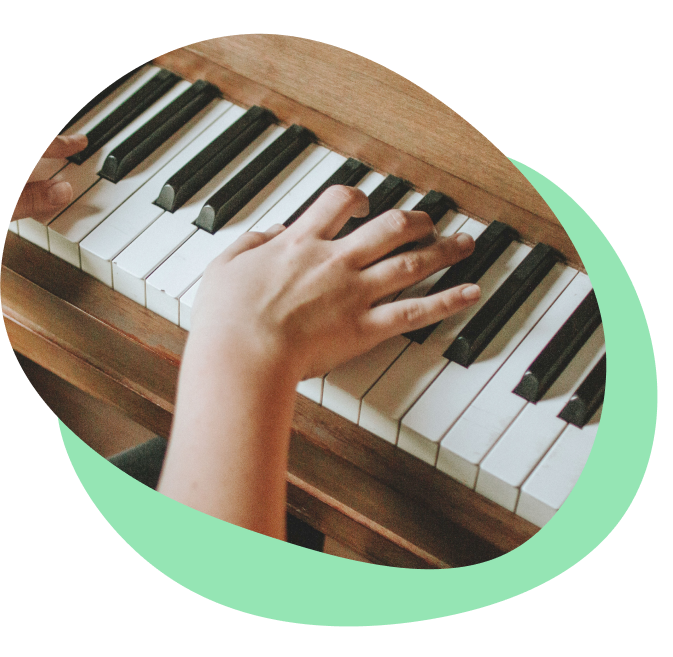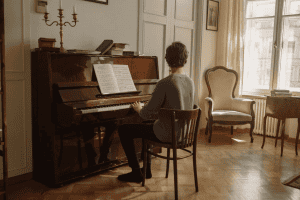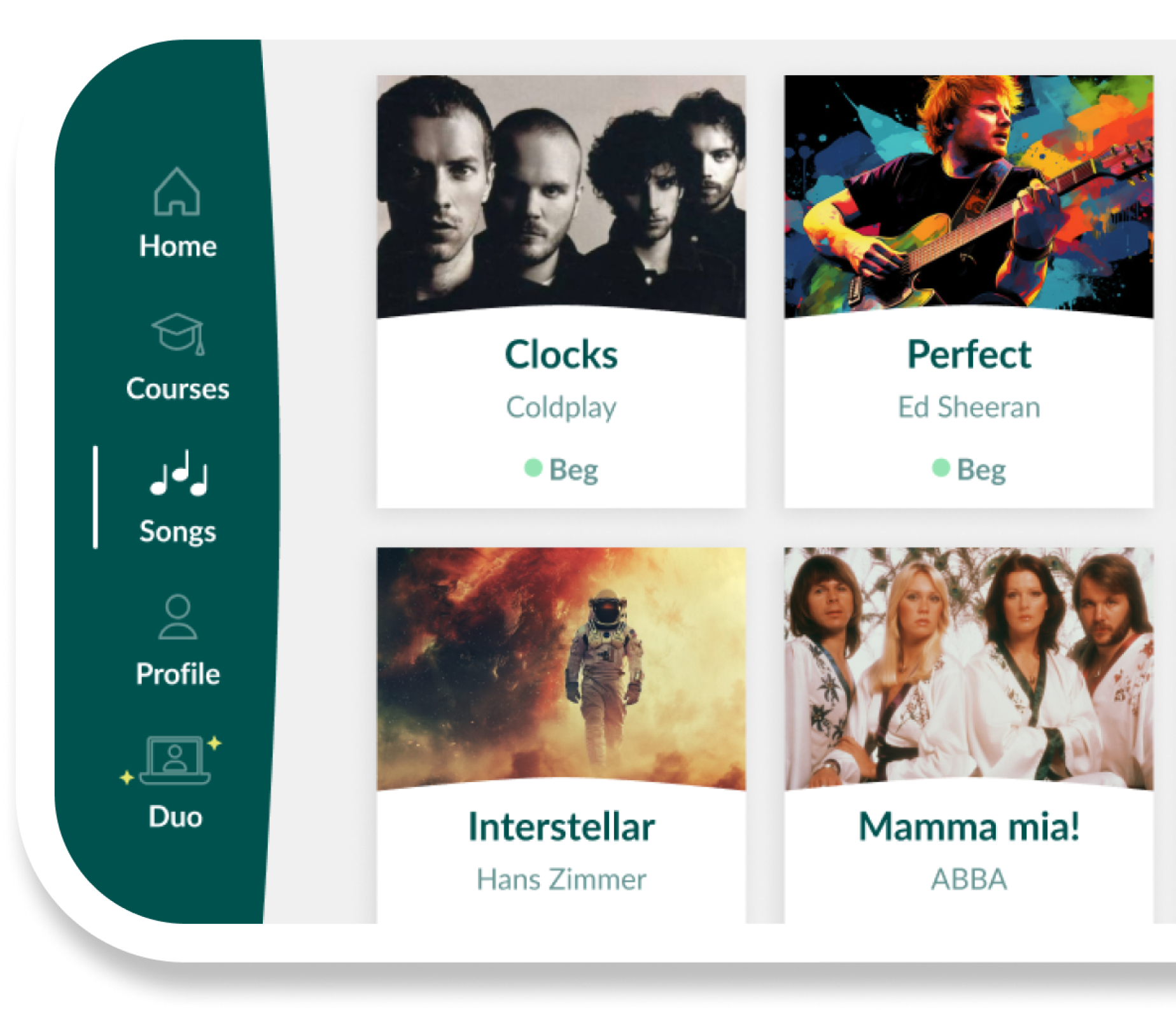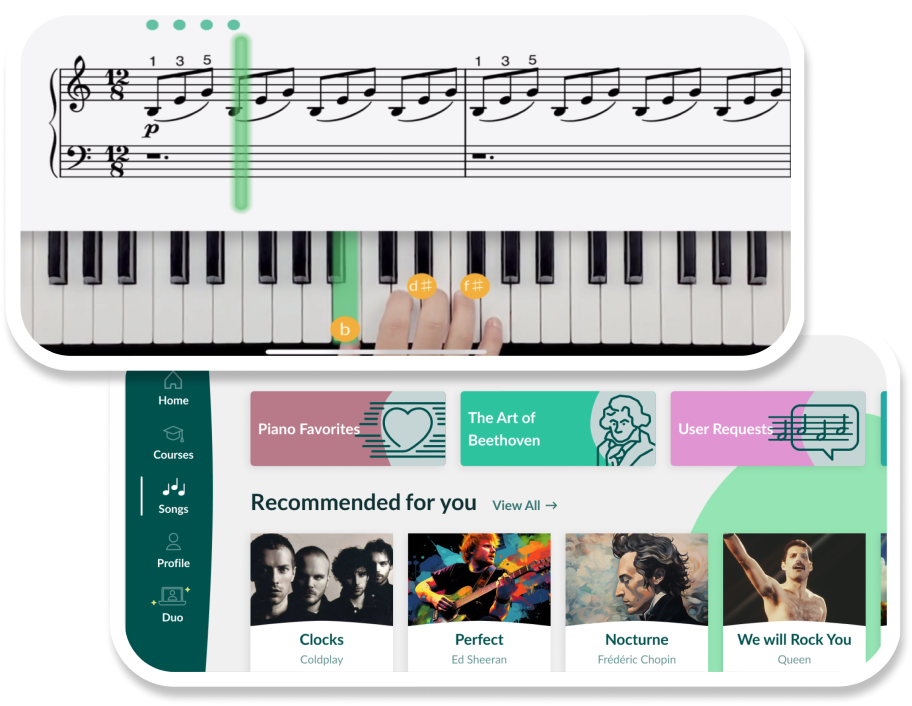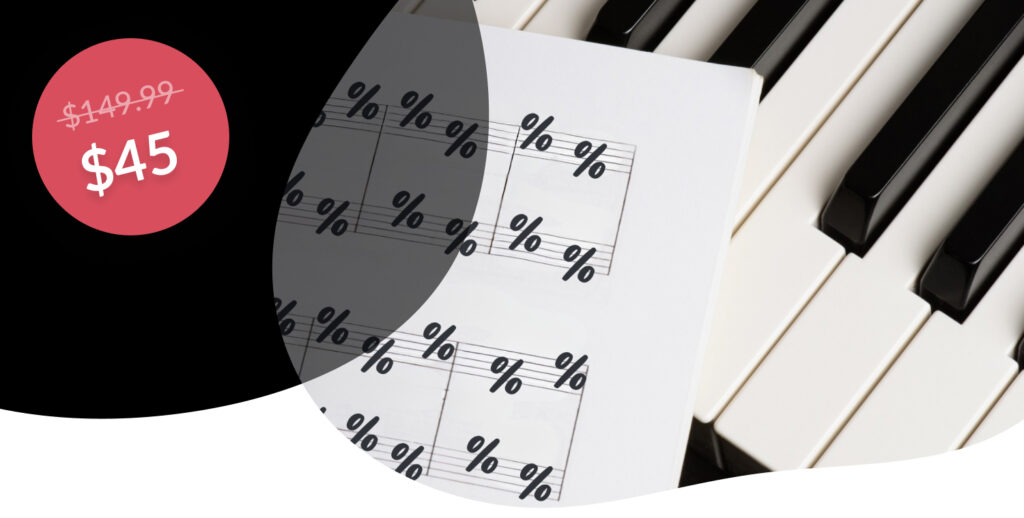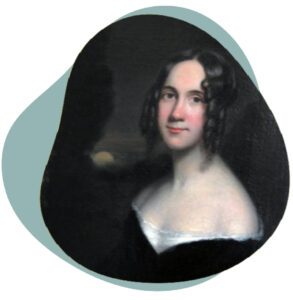
Did you know “Mary Had a Little Lamb” was based on a true story? Sarah Josepha Hale wrote the famous nursery rhyme inspired by a little girl, Mary Sawyer, from Boston whose little lamb followed her to school one day in 1816.
Are you interested in playing “Mary Had a Little Lamb” on the piano? It’s short, simple and instantly recognizable, a great way to build confidence while learning the basics.
With Skoove, you don’t just get the notes. We guide you step by step with finger positions, practice tips and encouragement. Whether you’re learning on your own or helping a child begin, this “Mary Had a Little Lamb” piano song tutorial will show you how to play the melody with ease.
Cheat sheet
| Artist | Sarah Josepha Hale |
| Composer | Sarah Josepha Hale |
| Release year | 1830 |
| Genre | Traditional / Nursery Rhyme |
| Difficulty level | Beginner |
| Instrument | Piano / voice |
| Key | C major |
| Meter | 4/4 |
| Techniques | Hands separately or together with simple melody |
“Mary Had a Little Lamb” piano notes and finger positions
Let’s look at the notes you’ll be playing. Here’s the full “Mary Had a Little Lamb” piano sheet music with finger numbers included.

This song is made up from short repeating patterns. Most of the melody uses just three notes: C, D and E. Let’s break it down hand by hand.
Playing the notes with the right hand
The right hand plays the main tune everyone knows. Place your thumb (finger 1) on middle C, your index (2) on D and your middle finger (3) on E. This way, your hand naturally covers the notes you need while relaxing on the subsequent notes. Here’s a line of the opening right-hand notes:
E (3) – D (2) – C (1) – D (2) – E (3) – E (3) – E (3)
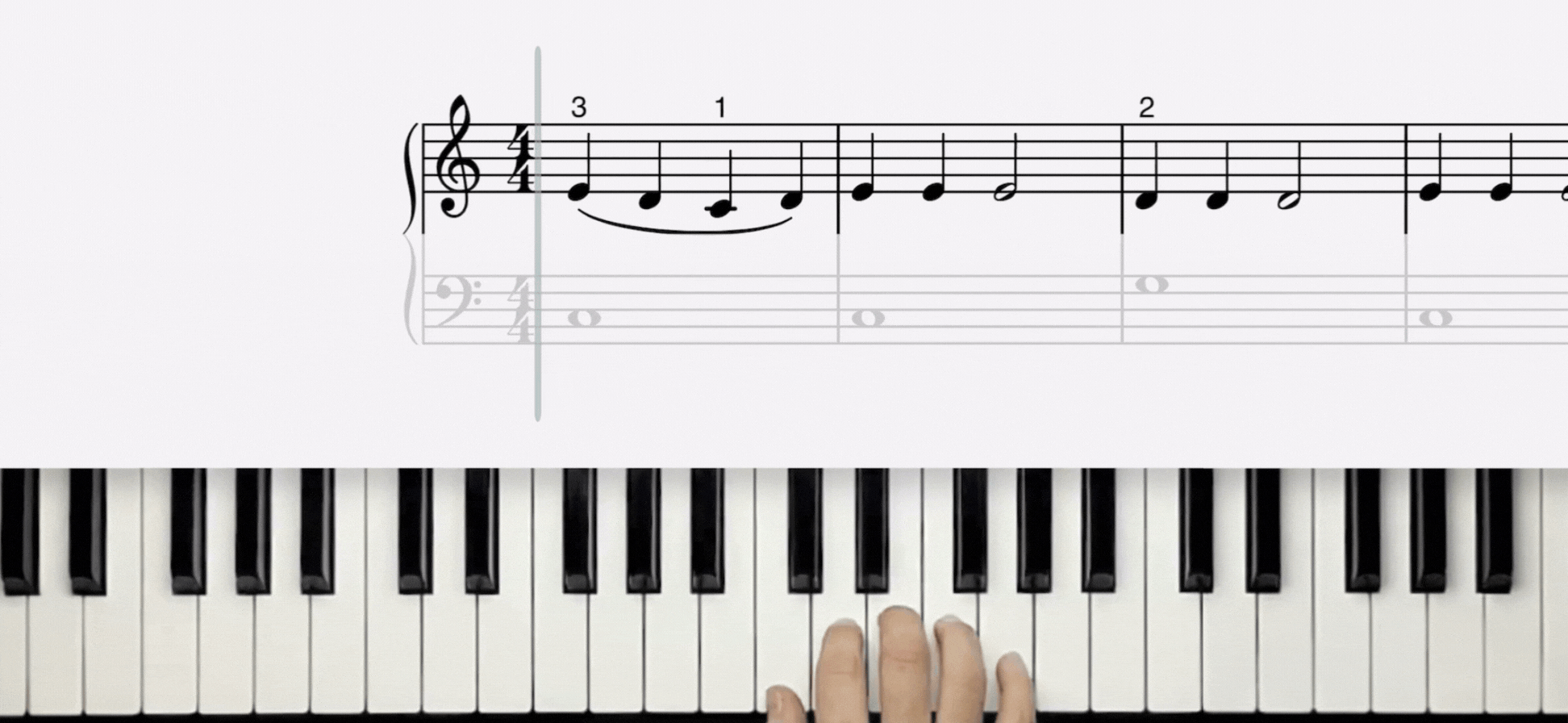
Say the lyrics while you play the notes. This helps you stay in rhythm and remember the sequence.
Playing the notes with the left hand
The left hand keeps the accompaniment very simple so you can focus on the melody. In the sheet music, you’ll see long notes under the melody. These are played on C with your left-hand pinky and G with your left thumb. Here’s a line of the opening left-hand notes:
C (5) – C (5) – G (1) – C (5) – G (1)
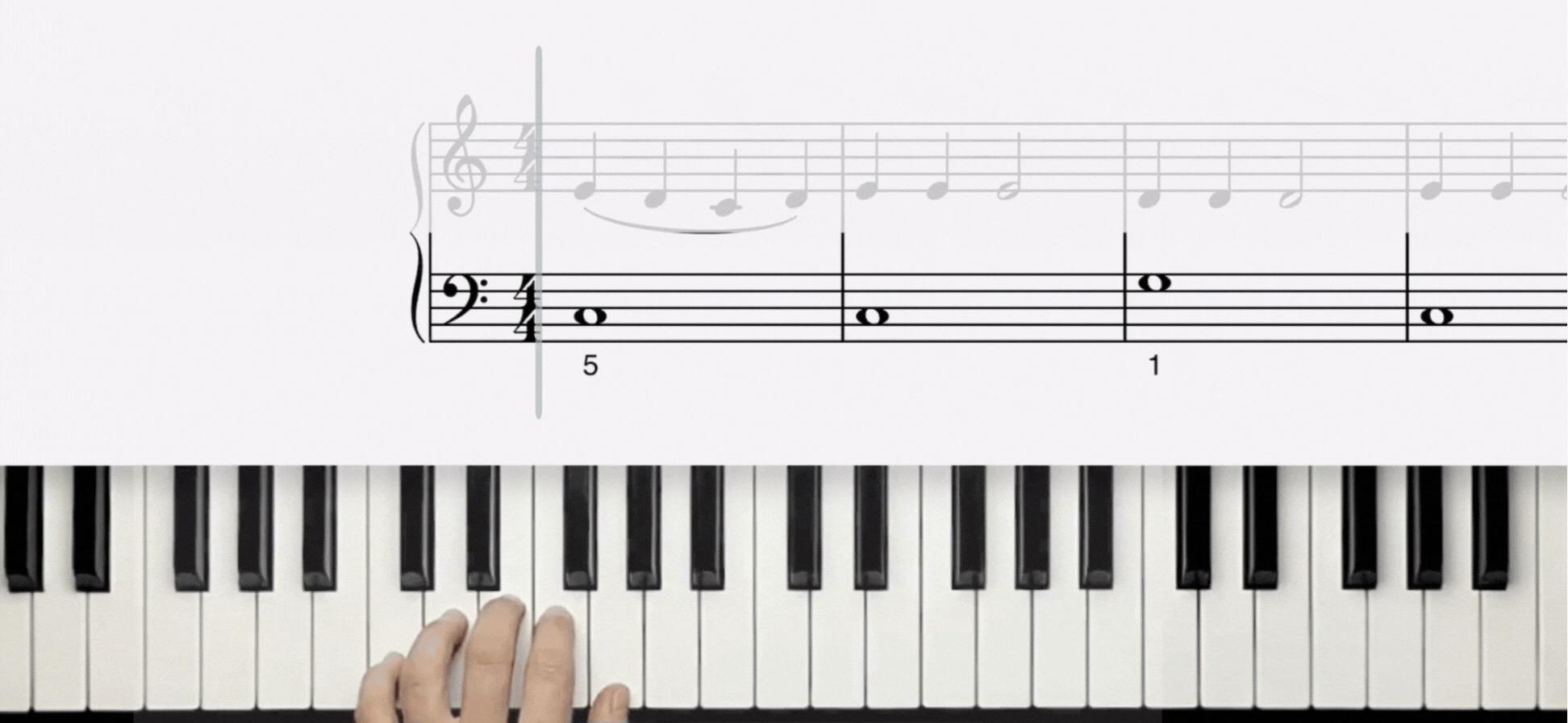
How to play “Mary Had a Little Lamb” on piano?
Sometimes the easiest way to learn a song is to see and hear it in action. That’s why we’ve prepared a step-by-step video tutorial for “Mary Had a Little Lamb”. In this walkthrough you’ll see the notes, learn which fingers to place on each key and play along at your own pace.
“Mary Had A Little Lamb” chords and progressions
Learning “Mary Had a Little Lamb” on piano is straightforward as it uses only two chords with three simple melody notes: E, D and C. Once you’ve learned the melody, you can add two simple C major and G major in the left hand.
- C major: C-E-G
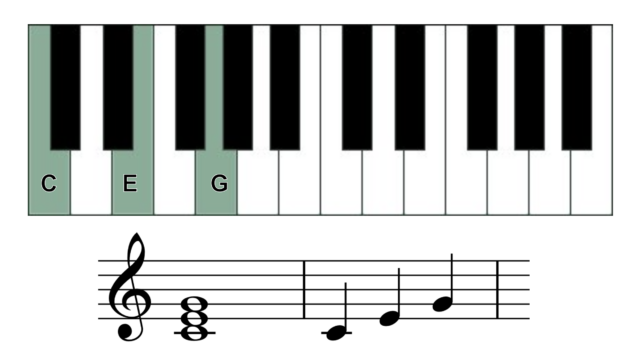
- G major: G-B-D
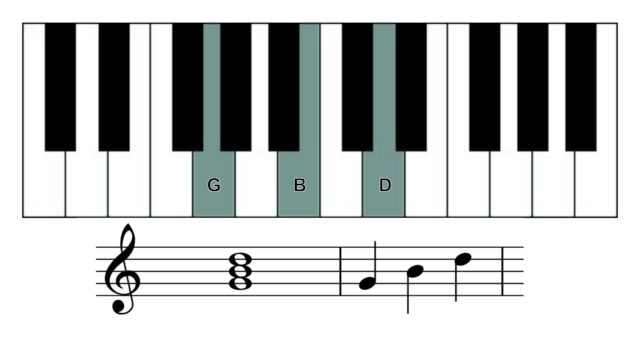
Try placing your right-hand thumb on C (1st finger), your middle finger on E (3rd finger), and your pinky on G (5th finger). You can use this same finger position for the notes in G major. Practice playing these notes together smoothly. Once comfortable, play the C major chord in every bar but the 3rd and 7th bars where you will play the G major chord. Playing this along with the melody of “Mary Had a Little Lamb” will build your piano skills further.
Lesson plan
Step 1: listen to the song
Listen to the song “Mary Had a Little Lamb” by Sarah Josepha Hale a couple of times to get a sense of its overall structure and nuances.
Step 2: practice the “Mary Had a Little Lamb” chords
Take a look at the chord charts and practice playing those chords. Make sure that you’re paying attention to your hand positioning.
Step 3: try the tune in the right hand
Try playing the melody in the right hand only initially and get accustomed to it.
Step 4: learn the left hand accompaniment
Now take a look at the accompaniment in the left hand and get more familiar with that part.
Step 5: play both hands together
Once you’ve learned the song for both hands separately, you can try playing hands together. It’s helpful to start slowly and then increase tempo as you get more accustomed to playing both parts simultaneously. You can use the metronome in the Skoove app to help with this.
Practice tips for “Mary Had a Little Lamb” on piano
Here are some Skoove-approved practice tips to make “Mary Had a Little Lamb” easier and more fun:
- Start with just the right hand – Focus only on the melody at first. Play the first phrase slowly until it feels comfortable. Once you can play it three times in a row without stopping, move on to the next phrase.
- Clap or sing the rhythm – Before playing, try clapping the beat or singing the lyrics while tapping the keys gently. This helps you lock in the steady rhythm of the song.
- Add the left hand later – Don’t rush into playing both hands together. Practice the left hand alone (just holding the C or C chord) so it feels natural. Then try adding it to the right hand one phrase at a time.
- Sing along – Have the lyrics in your head or sing along while you play. This will help you remember the tune and keep you in time.
- Play with expression – Once you’re confident, experiment with dynamics. Try playing softly the first time and louder the second. Even a simple song feels more musical this way.
Ready for your next piano step?
If you can play “Mary Had a Little Lamb” on piano, you’ve already proven you can turn a few simple notes into real music.
The best way to keep building your confidence is to practice regularly and explore new tunes. Songs like “Twinkle Twinkle Little Star” or “Happy Birthday” are great next challenges. With Skoove’s interactive lessons, you’ll always know what to play next, get instant feedback and discover hundreds of songs you’ll love. Take the next step with Skoove and let us guide you to your next piano milestone.
Author of this blog post:
Susana Pérez Posada

With over seven years of piano education and a deep passion for music therapy, Susana brings a unique blend of expertise to Skoove. A graduate in Music Therapy from SRH Hochschule Heidelberg and an experienced classical pianist from Universidad EAFIT, she infuses her teaching with a holistic approach that transcends traditional piano lessons. Susana’s writings for Skoove combine her rich musical knowledge with engaging storytelling, enriching the learning experience for pianists of all levels. Away from the piano, she loves exploring new places and immersing herself in a good book, believing these diverse experiences enhance her creative teaching style.
Published by the Skoove team




